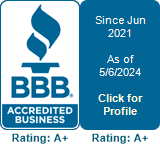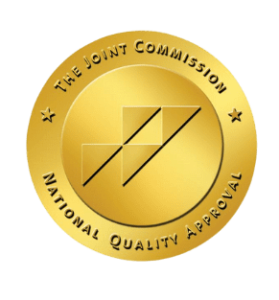When you’re trying to help someone struggling with drug or alcohol addiction, you’re probably thinking the best place to start is by staging an intervention. While that’s true, you also have to remember that the success of an intervention is determined long before the intervention even begins.
What Are Intervention Strategies?
Intervention strategies refer to any techniques used to help someone break out of the cycle of addiction. There are many ways to achieve this goal, but ultimately, you have to remember that the same strategies don’t always work for everyone. There’s no magic formula for making a loved one go to rehab, and even a professional interventionist can’t guarantee a loved one will accept help.
That’s why it’s essential to start by defining what success means to you when you’re trying different drug and alcohol intervention strategies. While the ultimate goal of an intervention is to guide an individual toward accepting help, you can’t always measure the success of different strategies based on the outcome alone.
Instead, you can establish healthy boundaries and enforce them. Keep in mind that when someone is struggling with addiction, their actions are out of your control. You’ll never convince them to quit using drugs or alcohol if they don’t want to, but setting healthy boundaries and enforcing them is a step forward. If you do that, you can consider the intervention a success based on whether they admit the need for help.
We’ve found that most people struggling with addiction eventually realize they need help on their own when their loved ones consistently uphold boundaries, even after initially avoiding the issue or resisting the need for help.
Two Types of Addiction Intervention Methods
Before you start planning on intervention, it’s helpful to start with a basic understanding of the two most common approaches:
Johnson Model of Intervention
The Johnson model of intervention is the one most people are already familiar with. It’s the type of intervention commonly shown in television and movies, where family members ambush the individual into an intervention without warning. For example, staging a Johnson intervention may involve leading someone to think you’re going out to dinner, but they end up walking into a room with their family and are forced to confront the issue of addiction.
The hope of a Johnson intervention is that it will shock someone into getting the help they need and end up realizing that their darkest day was actually a turning point. Unfortunately, in practice, Johnson interventions can lead to feelings of betrayal, deception, or resentment later on. At the same time, if the individual isn’t wholeheartedly committed to getting help, they may be more likely to relapse later on.
Invitational Model of Intervention
The invitational model of intervention advocates for a much different approach than Johnson interventions. With the invitational model, you perform all the same prep work as you would for a Johnson intervention but instead of springing the intervention on the individual, you first explain the purpose of the intervention to them. You let them know that you’re holding a family meeting for them. They can choose to participate or not, and you hold the meeting with or without them. Individuals struggling with addiction often agree to participate, sometimes simply out of curiosity.
While the person may not always agree to participate in the intervention initially, the invitational model can be beneficial in the long run when families consistently uphold boundaries. Eventually, the family member recognizes their need for help, coming to terms with it on their own without being coerced into rehab.
Which Intervention Model Is Better?
It’s impossible to claim that one intervention model is better than all others because it depends on the situation. For some individuals, the Johnson model may prove more effective, while it may be counterproductive to recovery for others. For example, someone who’s at a high risk of losing their life due to addiction may need the shock of a Johnson intervention to accept help, while somebody with a traumatic past may benefit from the more open-ended approach of an invitational intervention.
Sometimes, you may even have to try a hybrid of multiple intervention models to achieve an optimal outcome. When determining which intervention models to apply with a specific individual, it’s always best to consult with a professional interventionist before confronting your loved one.
The Five Best Intervention Strategies
As mentioned above, it’s best to go into an intervention knowing that any number of outcomes are possible. You need to have specific goals in mind, but you can also measure the success of an intervention based on criteria other than whether the person agrees to go to rehab or not. To have an effective intervention, make sure to implement these five strategies into your approach.
1. Prepare for Interventions
You can’t improvise an intervention. As we like to say at ALYST, interventions are really just preparation. It’s all the preparation that leads up to the intervention that determines its success. The last thing you want to do in the middle of the intervention is start discussing the goals of the intervention, or a backup plan when all else fails.
Many people approach intervention preparation as someone else’s responsibility or assume that it’s as simple as figuring out where a loved one will go to treatment, but that’s not usually the case. Working with a professional interventionist who will take responsibility for planning and guiding the intervention is critical, but every person involved in the intervention has to be willing to perform an honest self-assessment and work on themselves leading up to the intervention.
At the same time, knowing when to stage an intervention is almost as critical as knowing how to do an intervention. Interventions are a lot like chess. You can’t start attacking other pieces too soon, or your own pieces will end up captured. If you attack too soon, you lose the game, so a big part of success is putting the pieces in the right place and knowing when to attack. Similarly, with interventions, if you jump in too soon, you won’t make any progress or successfully address the addiction.
One of the best places to start preparing for an intervention is by setting realistic boundaries.
2. Set Realistic Boundaries
Leading up to an intervention, boundaries are the most significant area that requires preparation. If family members draw boundaries but don’t follow through on consequences when they get crossed, it reinforces to the addict that these boundaries mean nothing.
It’s a common pitfall for family members to draw extremely hard lines that they won’t actually follow through on. For example, a wife may threaten divorce, a father may use money as an ultimatum, or a sibling may warn about calling the police. However, if the person struggling with addiction continues to use and nobody follows through on the consequences, you’re essentially telling them it doesn’t matter, and they can continue using.
That’s why family members should never draw boundaries they can’t uphold. Honest self-reflection and personal improvement both help determine the boundaries and repercussions prior to the intervention. Family members have to be honest and realistic about the expectations they can establish and uphold with the person they care about, or they may end up doing more harm than good.
By setting realistic boundaries leading up to the intervention, each person has time to reflect on what behavior they’re willing to tolerate and what they’re willing and can do to stop any behavior they consider unacceptable. In our experience, the more committed family members are to establishing and upholding realistic boundaries, the more likely their loved one is to achieve long-term sobriety.
3. Define Family Support
As much as family members may feel like it’s the problem of another family member, addiction is a family issue, and it’s the family’s responsibility to be part of the solution. In our experience, family support is fundamental to a loved one’s sobriety.
On top of setting realistic boundaries, supporting a loved one also requires upholding those boundaries and following through on consequences when they’re crossed. The good news is that planning and coordinating an intervention is an ongoing process that doesn’t happen overnight.
With the right intervention team, every family member learns how to draw and uphold boundaries in a productive way, and is supported in that endeavor. If a family member isn’t open to addiction education, intervention training, or personal improvement, they most likely aren’t ready to be a productive member of the intervention team.
Ultimately, family members need to embody an attitude toward their loved one that sounds something like, “Listen, you’re out of my control. I’m not here to tell you what to do. I’m here to support you if you want help. If you don’t, then I can’t be involved to witness your demise from the front row on the sidelines.”
While it might not always feel like support, these are the boundaries that—when they run into enough—often cause someone struggling with addiction to admit they need help.
4. Eliminate Excuses
It’s common for someone struggling with addiction to start searching for reasons for why they can’t enter treatment. Excuses can range from “Who’s going to look after my dog?” to “I can’t afford it.” Before staging an intervention, anticipate potential objections the individual may come up with to avoid treatment. Once you’ve outlined the most likely excuses, come up with a plan and counterpoints.
If the person has pets, bills to pay, dependent family members, or any other day-to-day responsibilities, make sure you set up a plan for someone to take care of these things during treatment. If you can tell them that everything’s already taken care of, you remove another roadblock to recovery and are one step closer to ushering them toward accepting help.
As we like to say, if there are any loose ends leading up to an intervention, you’re not ready. It’s always worth tying up those loose ends before staging the intervention, so you can proactively avoid excuse-making in the middle of the intervention.
5. Try Again, When All Else Fails
If it’s your first time participating in an intervention, don’t be surprised if the individual doesn’t end accepting help and entering a treatment program. Interventions don’t always end that way, particularly on the first attempt, and that’s why it’s vital to ground the success of an intervention based on outcomes other than rehab.
At the same time, just because there’s no guarantee an intervention will work the first time doesn’t mean it isn’t worth doing. You have to start somewhere, and it isn’t rare for individuals to participate in three or four interventions before they’re willing to accept there’s an issue.
When interventions don’t lead to a loved one accepting help, the most important thing to remember is that doesn’t mean interventions don’t work. As mentioned above, that isn’t the only possible positive outcome of an intervention, and it may simply be that the intervention approach or the timing wasn’t right.
When intervention doesn’t work the first time, that only means it’s time to dig deeper. Past interventions can be excellent learning experiences as you plan the next intervention or decide how to uphold boundaries until the person you care about comes to terms with their addiction.
Should You Stage an Intervention on Your Own?
It’s common for people to ask if they can stage an intervention without professional help, particularly if privacy is a concern. While you can, it generally isn’t a good idea and rarely leads to fruitful dialogue. Instead, it’s always recommended that you have a professionally trained interventionist plan and stage the addiction intervention. This saves you time and trouble while helping you avoid the most common pitfalls where interventions go wrong.
At the same time, a professional interventionist is recommended when staging an intervention because they provide an objective voice that can keep the conversation focused and prevent participants from becoming too emotionally charged to accept help.
If privacy is a priority, make sure that the intervention experts you choose can adjust their approach to accommodate your concerns.
Is the Problem Serious Enough for an Intervention?
If you’re thinking about specific intervention strategies to employ, there’s a good chance you’ve already determined that the problem is severe enough to require an intervention. But if you’re still on the fence about whether addictive tendencies or behavior have become extreme enough to warrant an intervention, our addiction quiz can help you determine what to do next. If you still have questions, reach out to our team.






